Don’t Over-Engineer IP Camera Systems: RemoteIP vs Category Cable
While analog cameras made widespread surveillance possible for the first time, their days are now numbered as new technology steps in to replace their low-quality video, poor storage capabilities, time-consuming processes associated with reviewing footage and high power consumption.
IP cameras supported by video management systems are now industry standard, offering many things their predecessors can’t:
- Higher image quality and more clarity
- Remote monitoring and management
- More storage capacity
- Faster footage-search capabilities
- Analytics and AI to detect suspicious behavior or unusual events
- The ability to quickly add cameras as needed
Planning Considerations for IP Cameras
Because of the difference between the two technologies, the transition from CCTV to IP brings important considerations to the table.
Bandwidth
IP cameras have higher resolution, so they generate larger data files. This typically means more requirements for network bandwidth and storage capacity when comparing the analog baseband signal of an image to a digitized version of the same image (without compression).
However, IP cameras also have compression on their side, which keeps bandwidth in check. With analog, compression often leads to information and quality loss—which is why many people wince when they hear the word.
Digital compression, however, is “smarter” and can remove redundant, unnecessary or imperceptible pixels to reduce bandwidth consumption without significantly impacting image quality. In the case of IP cameras, compression is a good thing: It creates smaller files and reduces bandwidth requirements so that high-quality footage can be transmitted faster.
For example, the average bandwidth consumption for an IP camera is between 1 Mb/s and 2 Mb/s (assuming 1080p, H.265 codec and 6 FPS to 10 FPS), while an analog camera doesn’t require network bandwidth.
Cables
IP cameras aren’t compatible with coax cables. They require Ethernet cables and RJ45 network connectors, which may mean an upgrade to your network infrastructure.
Power
Analog cameras traditionally use more power than IP cameras. Ongoing innovation in this area continues to drive the energy use of IP cameras down.
While IP cameras require less energy to run, they need a power source of some kind. Because they use Ethernet cables, there are more powering options available for IP cameras that aren’t possible with coax and analog cameras.
Distance Limitations
Distance limitations for IP cameras depend on several factors, including cable type and quality, power source, etc.
As surveillance networks scale, cameras are being installed in remote locations. (Think parking garages, stairwells, outdoor gathering spaces, skywalks or loading docks, for example.) In many cases, these devices may not be located within 100 m of a switch or telecommunications room—which is a requirement for Ethernet cables per TIA standards.
There are many ways to work around this distance constraint, such as using fiber or hybrid or building a new telecommunications room closer to the camera. But the most practical, cost-effective choice is to extend the distance of the twisted-pair copper cable—which is possible thanks to the low data rate of an IP camera.
Determining Bandwidth Requirements for IP Cameras
Better image quality with lower bandwidth requirements: Does it seem hard to believe? Let’s put these claims to the test using this online calculator.
First, set your parameters for things like resolution, compression, FPS (frames per second) and number of cameras. Then, the calculator estimates network bandwidth. (For example, a camera with 1080p resolution and H.265 compression is a very popular specification.)
As you use the calculator to run these parameters, it generates the required data rate. Speeds of 10 Gb/s aren’t necessary to support IP cameras, which means that Category 6A cable isn’t necessary, either.
Typical data speeds for video are also provided in the table below. Reducing factors like frames per second or color depth further reduces bandwidth requirements.
| Codec | Uncompressed | H.264 | H.265 | MJPG2000 | |
|---|---|---|---|---|---|
| Resolution | Required Bandwidth | ||||
| 720p | 829 Mbps | 1.9 Mbps | 1.3 Mbps | 11.1 Mbps | |
| 1080p | 1866 Mbps | 4.3 Mbps | 3 Mbps | 25.1 Mbps | |
| 4K | 7465 Mbps | 17.3 Mbps | 12.1 Mbps | 100.2 Mbps | |
RemoteIP Cables for IP Cameras
What’s the best cabling choice for IP cameras? Belden’s RemoteIP Cables were made for applications like these.
Our RemoteIP Cables follow IEEE application standards, such as 10BASE-T, 100BASE-T and 1000BASE-T. They can supply data and power to remote IP devices up to 215 m away, more than doubling what Category cabling can provide.
With RemoteIP Cables, it’s possible to achieve 10 Mb/s transmission at 215 m, 100 Mb/s transmission at 200 m and 1 Gb/s transmission at 130 m. They also feature 22 AWG conductors, which help signals travel across longer distances while keeping cable heat levels low to protect electrical characteristics.
This allows you to install cameras wherever they’re needed, without concerns about power or distance limitations.
What About Testing?
We frequently receive questions about testing RemoteIP Cable. You can use the same device you use to test Category 6 or 6A—just change the settings on your testing device first. (If you test RemoteIP Cable to Category 6A specifications, it will fail.)
Let’s use a Fluke device as an example. Here’s how simple it is to set up your device for a RemoteIP Cable test.
Step 1
Select "Manufacturers" from the list of cable groups on the screen.
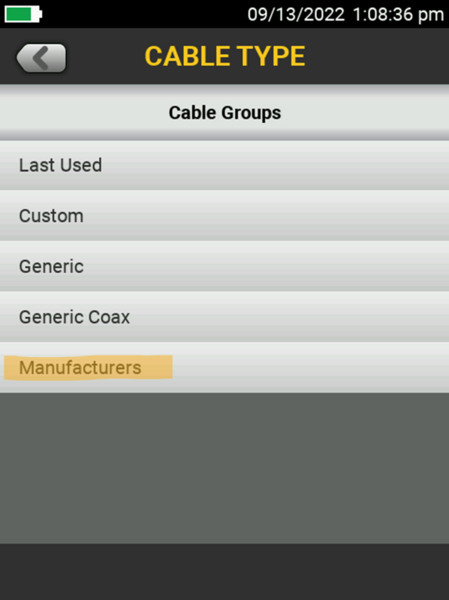
Step 2
Select "Belden" from the list of manufacturers on the screen.
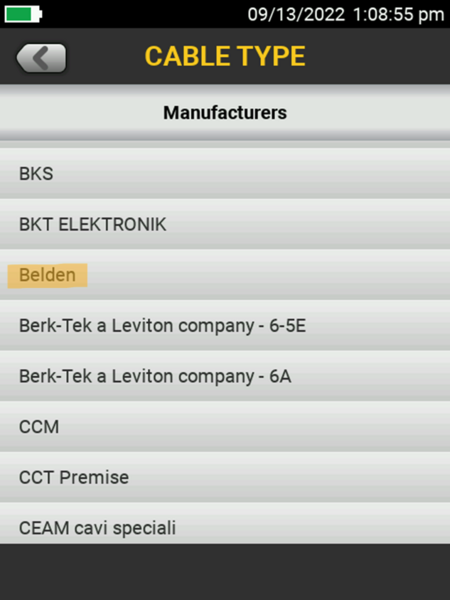
Step 3
Select "RIPPU CMP" for plenum or "RIPRU CMR" for riser from the list of the screen.
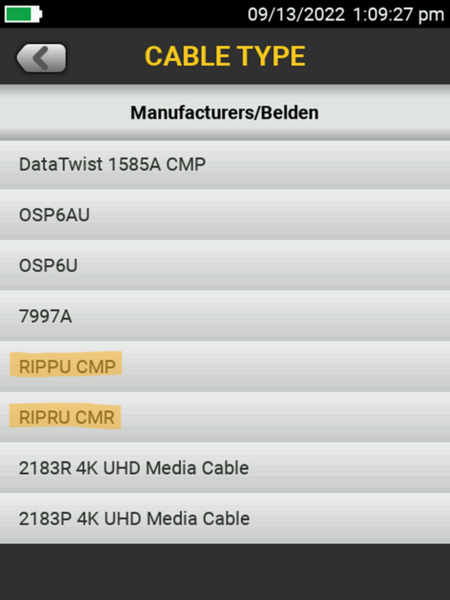
Step 4
Select "Vendor" from the list of limit groups on the screen.
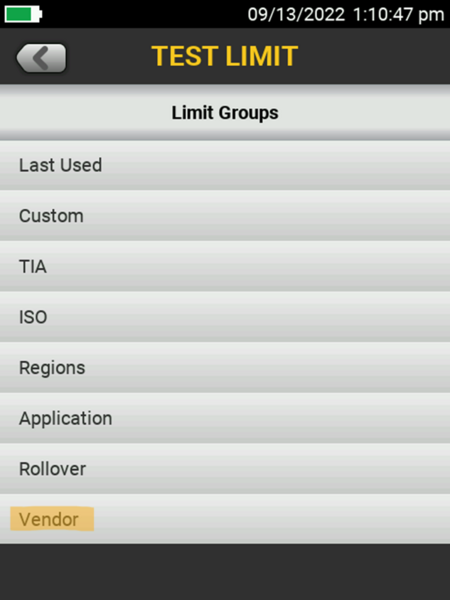
Step 5
Select either “Belden Long Reach Channel” or “Belden Long Reach Permanent Link” from the list on the screen. Channel testing includes the cable between the telecommunications room switch and the end device. Permanent link testing includes the fixed portion of the channel (the part that doesn’t change or move). It does not include patch cords or equipment cords.
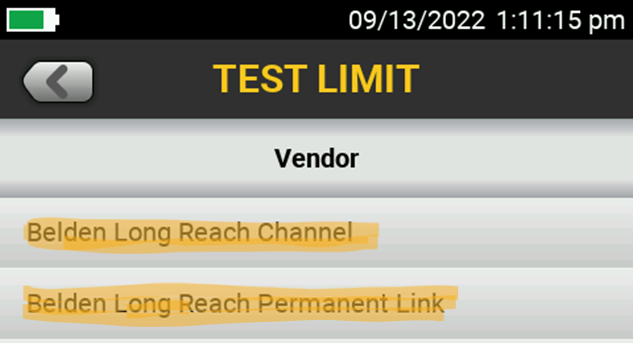
Now you’re ready to confidently test the performance of your cabling beyond 100 m and verify performance degradation with a simple “pass” or “fail.”

